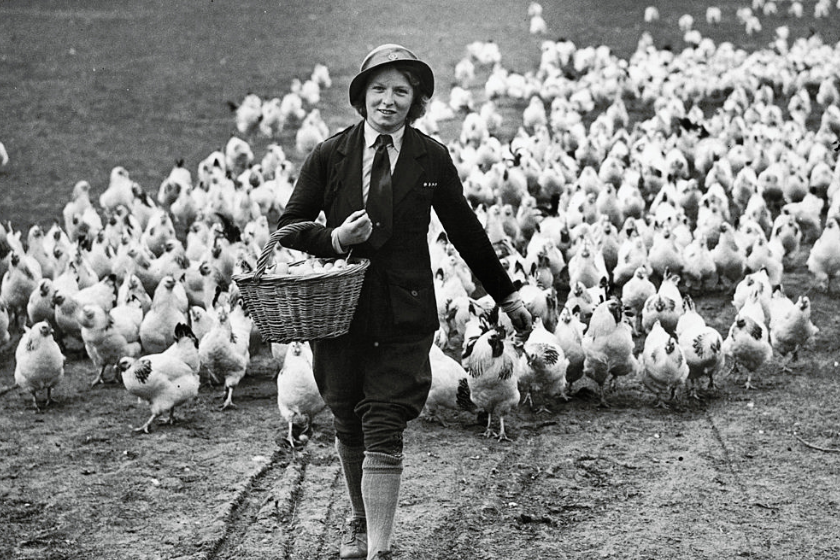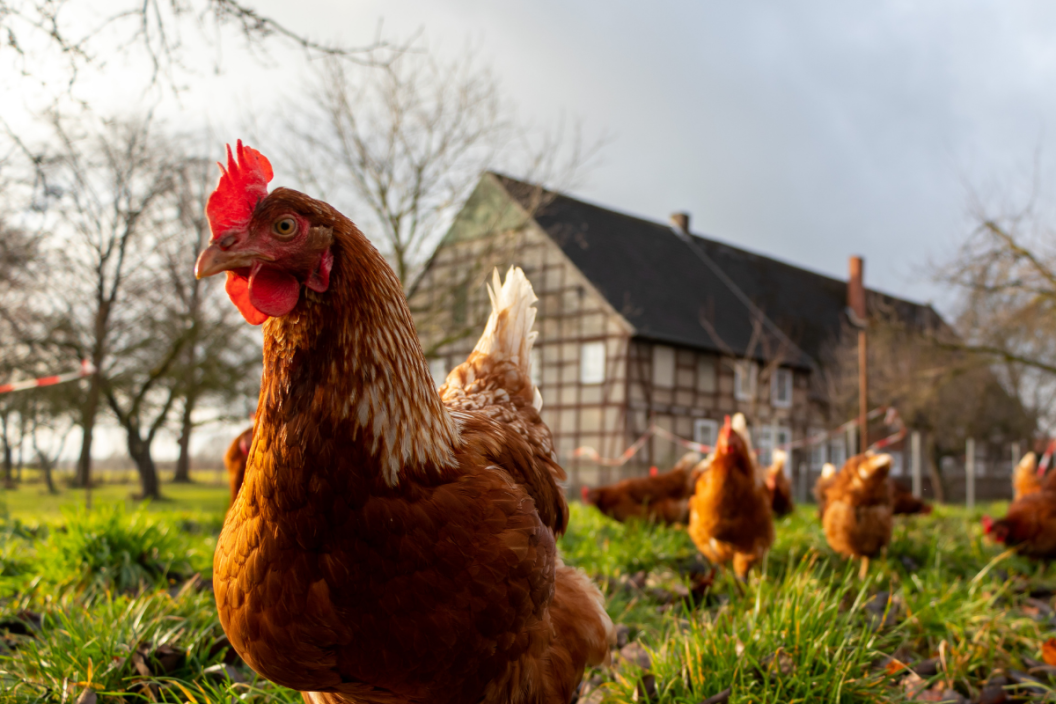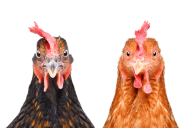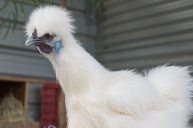Whether it's on your plate or in your backyard as a pet, the chicken is one of the most common birds. Let's dive into the history of chickens.
The history behind one of the most popular backyard livestock animals is fascinating! The importance of egg-laying hens and chicken eggs (generally speaking) to society has been in existence since the beginning... of everything! The chicken is one of the most dominant symbols in our history dominating aspects of our culture and culinary habits. For goodness sake, chickens joined the Romans in battle to help predict the outcomes of war.
Eventually relegated mostly to farms and breeding facilities, chickens are now commonplace as pets. Sure, they're not the most exotic birds, but they have quite an interesting story, and that story begins in the dinosaur age. Here's a primer on chicken evolution and domestication over the years.
Chicken Evolution: Where Do They Come From?

Fox Photos/Hulton Archive/Getty Images
The chicken evolution lies in a group of dinosaurs called the theropods, which evolved into two categories some 230 million years ago: the Ceratosauria and the Tetanurae. The Ceratosauria then split again into the ceratosaurids and the coelophysoids. The latter eventually resulted in the genetic line that produced the Tyrannosaurus rex. In 2003, paleontologist Jack Horner discovered a 68-million-year-old T. rex fossil in Montana. Inside its thigh bone, scientists found a blood vessel they were able to analyze. Their analysis revealed that, genetically speaking, domestic chickens are the closest living relative of T. rex.
Now, let's fast-forward a bit to examine the chicken's more recent evolutionary history.
The modern chicken (Gallus gallus domesticus), as we know it, is descended from several of four known species of wild jungle fowl (Gallus) that inhabited parts of Southeast Asia about 50 million years ago. Scientists believe the red jungle fowl, Gallus gallus, is the most likely progenitor of the modern chicken, although research suggests that the domestic chicken's yellow skin is a trait inherited from the gray jungle fowl, Gallus sonneratii. All told, it is more than likely that today's most popular types of chickens have multiple ancestors.
Chickens initially became domesticated between 8,000 and 10,000 years ago. There's also genetic evidence to suggest that there were simultaneous but independent domestication events in different parts of Asia and India. According to computational biologist Michael Zody, it's difficult to pinpoint the domestic chicken's origins and domestication history because the long history of interbreeding between wild and domesticated birds has resulted in inconclusive DNA evidence. Once chickens were domesticated, they were used for food, fighting, and religious purposes.
Various cultures spread them around the world over the course of thousands of years via migration, trade, and territorial conquests. The Polynesians brought chickens to the Pacific coast of South America around 1200 A.D. Over a period of several hundred years, and mostly due to the popularity of cockfighting, inhabitants of the New World became well versed in chicken care and breeding. Spanish explorers brought chickens to North America, and chickens soon became widely dispersed across the continent.
The chicken reached Europe (Romania, Turkey, Greece, Ukraine) about 3000 BC. Introduction into Western Europe came far later, about the 1st millennium BC. Phoenicians spread chickens along the Mediterranean coasts as far as Iberia.
From dinosaurs to backyard pets, chicken evolution can be tracked, in some form or another, for millions of years!
Now That's Some Ancient DNA!
Can you believe domesticated chickens are the ancestor of the T. rex? No wonder when my broody hen starts to growl at me, I immediately think of a dinosaur! You don't need a DNA analysis over here to know these are little dinosaurs running around our yard.
My chickens enjoy a free-range lifestyle, and I cannot imagine keeping them in their secure chicken coop area all day. If they were once wild species, then it makes sense they that would enjoy room to scratch and peck above and beyond even eating. Egg production in our flock actually increased after we start letting them free-range all day.
So enjoy those hens that lay eggs for you each day. Their ancestors had to travel far and wide to get here, and look at how many "American" heritage breeds there are today in the United States!
Find out more about chickens on the Wide Open Pets Facebook page!
This article was originally published May 7, 2019.




